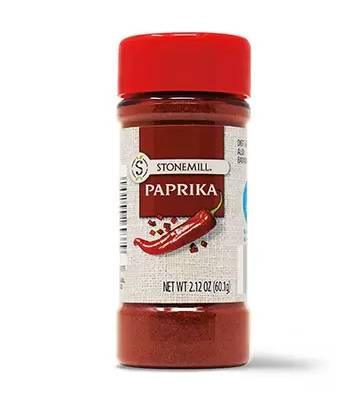Food Nutrition Facts
Nutrition Facts For
Smoked Paprika
Portion Size: 1 Tablespoon
| Nutrient | Value | % Daily Value* |
|---|---|---|
| 27.0 kcal | 1% | |
| 1.0 g | 0% | |
| 0.0 g | 0% | |
| 0.0 mg | 0% | |
| 0 mg | 0% | |
| 0.0 mg | 0% | |
| 4.0 g | ||
| 0.0 g | ||
| 0.0 g | ||
| 4.0 g | ||
| 1.0 g | ||
*Daily value based on a 2,000 calorie diet. Your daily values may be higher or lower depending on your calorie needs and health goals.
Calculate your daily calorie needs here
Nutrition Facts For 1 Tablespoon of Smoked Paprika

Smoked paprika, a vibrant and versatile spice, is made from pimientos (a type of sweet red pepper) that are smoked over oak fires before being ground into a fine powder. This smoking process imparts a rich, smoky flavor and aroma that distinguishes it from regular paprika. The resulting spice offers a deep red color and a complex taste that can range from sweet and mild to intensely smoky and almost bacon-like, depending on the variety. Smoked paprika adds a depth of flavor that's hard to replicate, bringing warmth and complexity to a wide range of dishes.
More than just a source of smoky flavor, smoked paprika also contributes visually to dishes. Its vibrant red hue can enhance the appearance of everything from stews and soups to roasted vegetables and grilled meats. It's a staple in many cuisines, particularly Spanish, where it's a key ingredient in dishes like paella and chorizo. Beyond its culinary applications, smoked paprika is also used as a natural food coloring. Whether used as a subtle background note or a dominant flavor, smoked paprika adds a touch of magic to countless recipes, transforming ordinary meals into something truly special.







